You have no items in your shopping cart.
0
You have no items in your shopping cart.
The following information is no substitute for real world experience or direct tuition from an expert highliner. Neither the author of this article nor Balance Community is liable in the event of any injury or death resulting from or to do with the information presented in this article.
Webbing in weblocks, on loose slacklines that are walked with a leash, have issues with slippage (1).
As the community, in general, has reduced the base tension in slacklines (particularly ones walked with leashes) there has been an increasing number of incidents that have resulted in either miss-loading of webbing in weblocks or issues with webbing tails being tied off in such a way that is very difficult to undo.
The webbing tail in the pictures below stopped any slippage, but, as a result, was extremely difficult to undo:
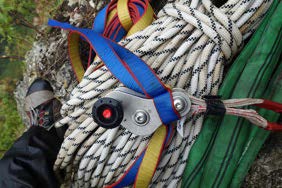
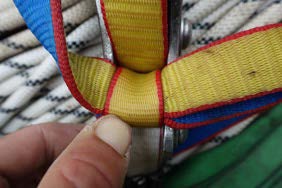
These issues led me to think about the best way one could tie off the tail of one’s webbing in a weblock. I’ve come up with a method, that, after trying out and optimising for awhile on my rigs, I feel is worth sharing.
Webbing that is single wrapped in a weblock relies on the friction that is created from the top strand (the part that one walks on) compressing the tail strand against the center diverter.
At lower base tensions this compressing force is decreased, and it seems that this combined with the comparatively sharper peak dynamic loads of looser lines when one catches or whips to result in an oscillation being created that jumps the webbing through the weblock slightly.
What this means is that on loose slacklines walked with a leash, every time someone catches or whips there is at least potential slippage in the weblock.
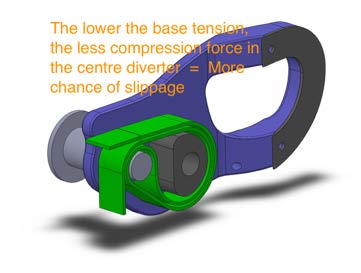
This is an issue because of the following:
1.) Take the tail of the webbing coming from the weblock
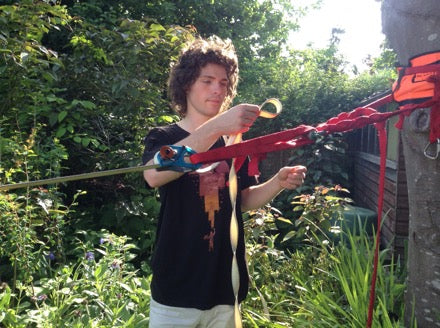
2.) Tie a Munter hitch (https://en.wikipedia.org/wiki/Munter_hitch)

3.) Put the Munter hitch into your delta quicklink / bow shackle
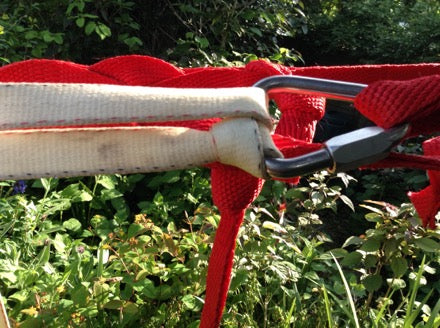
4.) Cinch it to remove slack between weblock and the Munter
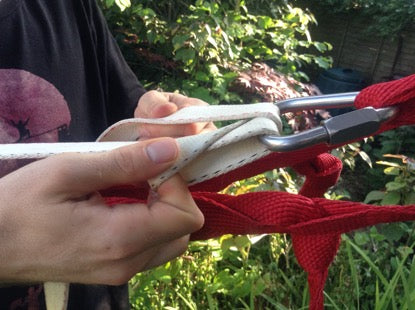
5.) Tie a Mule knot (http://www.animatedknots.com/muntermule)
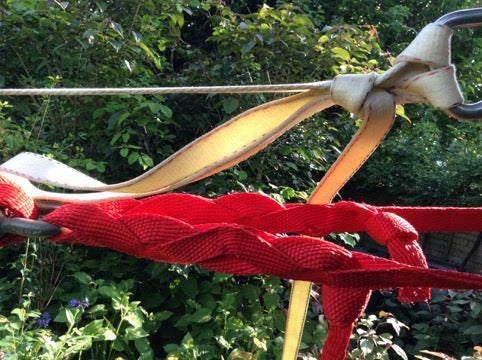
6.) Tie an Overhand on a bight (http://www.climbingtechniques.org/overhand-on-a-bight.html)

7.) Secure this Overhand knot
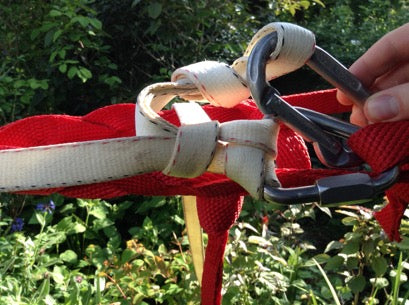
This is a excellent method because it means that when you want to re-tension or de-tension your line, all you have to do is undo the thing securing the Overhand on a bight, untie the Overhand, pop the Mule knot and slowly release any force held by the tail of the weblock with the Munter hitch.
I recommend using this method any time slippage in the weblock is a potential issue. This will most often be the case on loose slacklines walked with a leash.
Anytime that slippage in the weblock is NOT an issue I recommend NOT using the MMO Method. Either way, always backup your lines appropriately. Examples of when slippage in the weblock is usually not an issue are on Longlinesand Rodeolines.
Using the one and a half wrap method (2) is also an option on the static side of a line, however, you need access to the tail of the webbing for this and as such I can’t see any clear advantages of this. The one and a half wrap method has also not been conclusively proven to not slip.
The double wrap method (3) is also an option, however with the multiplication of forces on the weblock that this entails (at least with high tech webbing, and yet to be proven otherwise with low tech webbing), I would personally use the MMO method over the double wrap method every time.
If you’re using a delta quicklink to anchor your Munter hitch, take care that no strands of the webbing snag while being inserted.
When using this method, I recommend NOT putting the tail of the webbing up though the back of the weblock before tying the Munter (see picture below). This is because this will likely result in the undesirable situation of webbing being loaded over the side plates of the weblock.
I’ve recently been rigging my weblocks upside-down, so that the tail of the webbing can’t end up wedged between the backup and connector of the weblock (see the accompanying video to this article for instruction on this).
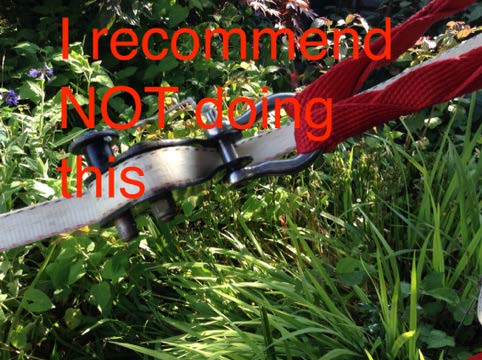
Some of the Balance Community pro team rigged the Gravatation Highline Festival in Brazil using the MMO method, with over 100 people sessioning on 10 highlines over 6 days. Every single mainline slipped, however none could slip more than a couple centimeters before it cinched against the Munter hitch. Because we used this technique we had no issues with damage to the webbing or with being able to uninstall the webbing afterwards.
If you have any comments or questions, feel free to leave them below.
1.) Article by Philip Gesing, Lisa Bretagne and Thomas Buckingham documenting slippage in weblocks: https://slacktuev.org/2015/11/05/webbing-slippage-in-low-tension-highlines/
2.) The one and a half wrap:
See page 10 for more information: Alpine WebLock 4.0 Instructions
3.) The double wrap (see page 11): Alpine WebLock 4.0 Instructions
| Product | Price | Quantity | Options | |||||
|---|---|---|---|---|---|---|---|---|
| Features |
| Availability: |
| Price |
| Options |
| Actions |

← Older Post Newer Post →
0 comments